Bending the curve
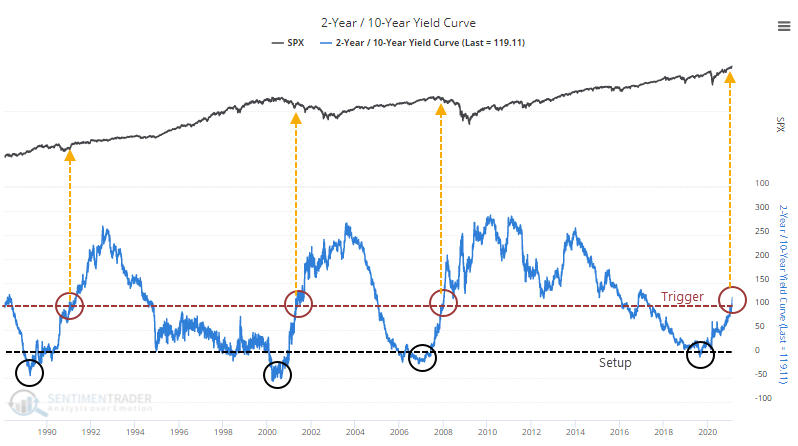
The U.S. Treasury market has seen some stiff selling pressure in recent days, on the heels of stiff selling in recent months. As a result, the benchmark 2-year / 10-year yield curve is the steepest in almost 5 years.
Whether this is a good thing or a bad thing depends upon whom you ask. Bulls will say it's a sign of recovery and good for financials, the bedrock of any sustainable rally. Bears will say it's the first prick in the TINA bubble that will clobber tech stocks, which have been powering most of the gains.
Opinions are a dime a dozen, so let's just objectively look at prior instances and see how things shook out.
There is no definitive date when the Federal Reserve explicitly began targeting the Fed Funds rate but academic literature seems to point to anywhere from 1982 to late 1987. So we'll go from there.
With the yield curve, we'll use a setup and a trigger. The setup is when it drops toward or below 0, with the trigger being when it rises to its current level over 110 basis points.

On a chart, it looks pretty ugly for the S&P 500. The numbers don't look especially great, either.

The Risk/Reward Table shows more of the former and less of the latter, though in '91 it didn't lead to any large decline, so there's that.

Among major assets, stocks were the worst performer. Gold held up best - over the next 2 years, its average drawdown was -10.4% versus an average maximum gain of +41.4%.
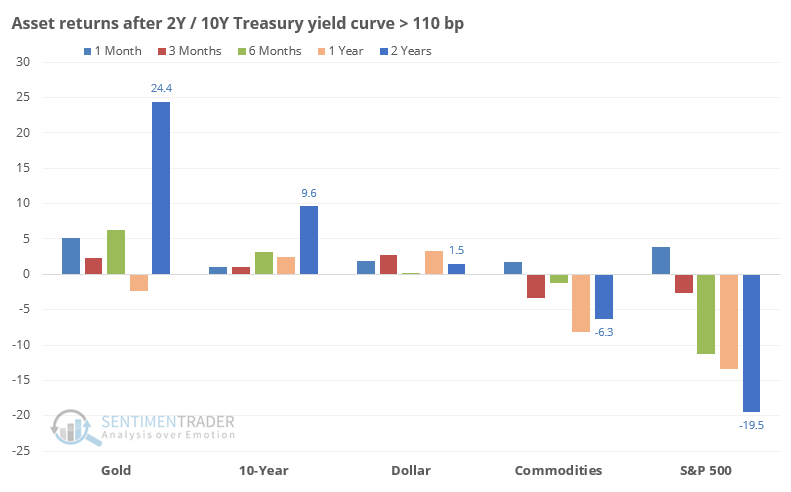
Sometimes it's easier to see it on a chart, so the four other assets are shown below.
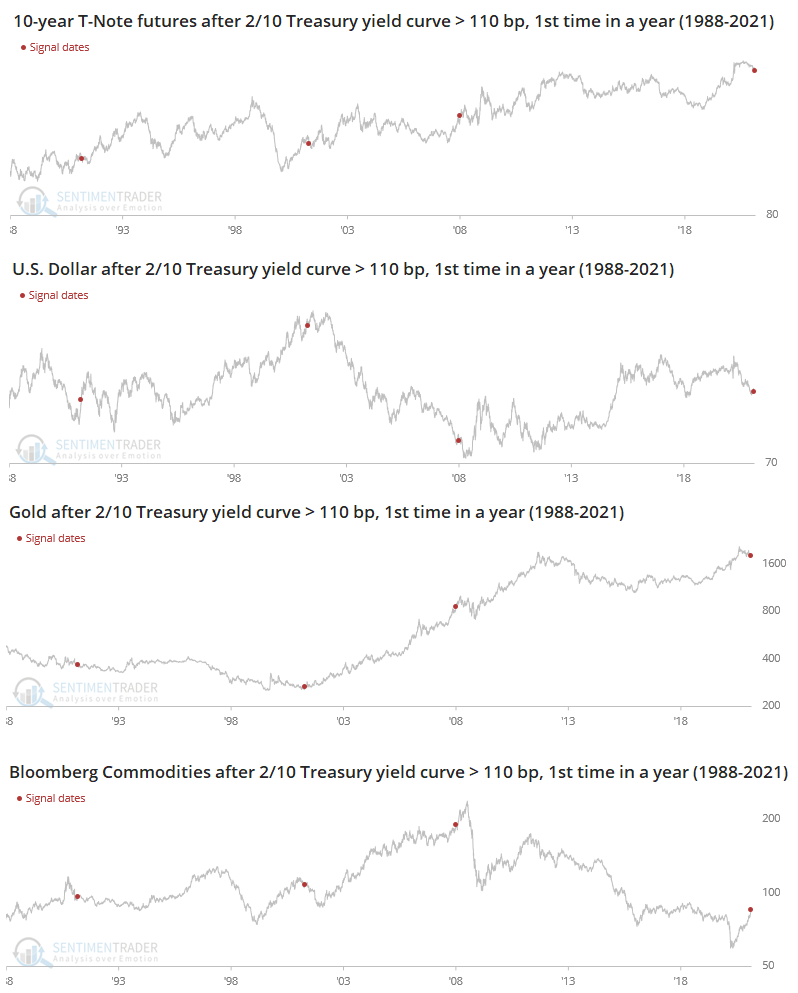
Among sectors, Staples held up the best across most time frames, while Tech, Utilities, Communications, and Industrials tended to fare the worst. Technology was the only sector to show losses over the next 3, 6, and 9 months after all 3 signals, averaging -9.6%, -11.5%, and -18.7%, respectively. Its average one-year return was -35.6% but by 2 years later had recovered to breakeven. Note that these are using total return, including dividends.
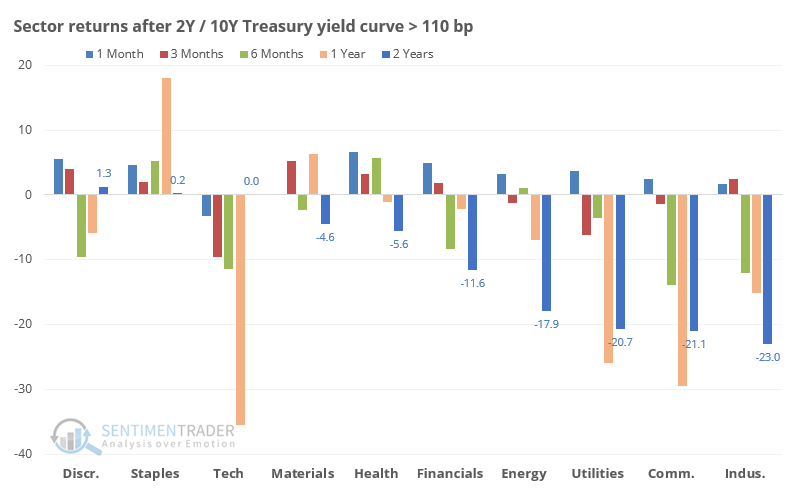
A look at factors shows mostly consistent negative returns. Small-caps were the least consistent losers, while large-caps were the most consistent losers.
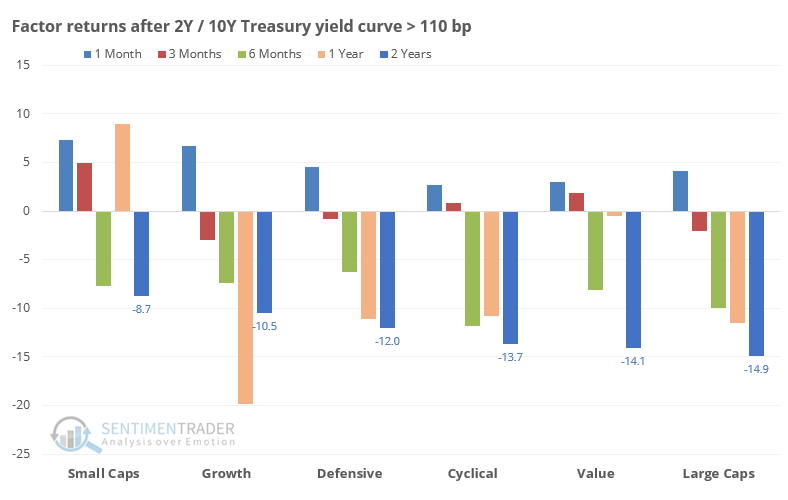
With a small sample size and some disagreement among them, it's hard to put too much weight on this move in the yield curve. It's tempting to just look at the last two signals and conclude that it's a major negative, but markets just aren't that easy. We would put it more on the negative side of the ledger than the positive one, especially for technology stocks, but it's not compelling enough to include it as a major factor.

